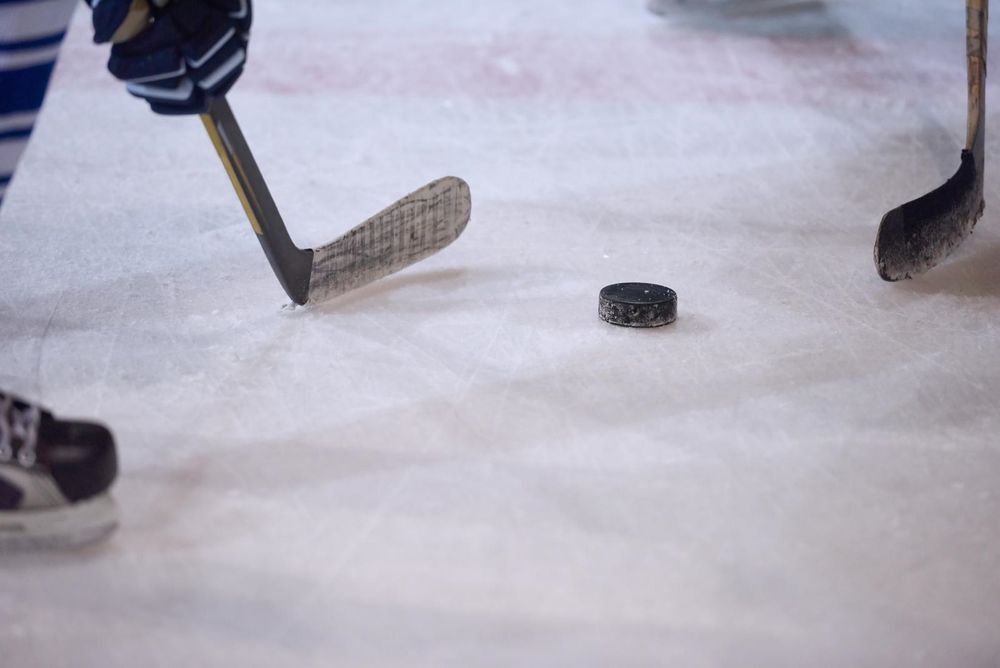In the realm of ice hockey, a sport that boasts both speed and excitement, one question looms large: why does it have three periods?
This unique structure, born out of careful consideration, has significantly impacted the game. By delving into the reasons behind this decision, we gain insight into the factors that influenced the transition from two halves to three periods.
Join us as we uncover the rationale behind this distinctive setup and why it is fundamental to the game of ice hockey.
Background: Reasons for Three Periods
One of the main reasons for the implementation of three periods in ice hockey is the need to maintain ice quality throughout the game. The evolution of ice hockey periods has shown that ice quality diminishes over time, affecting the gameplay experience. Splitting the game into three periods allows for the Zamboni to clean the ice, ensuring a smooth surface for players.
This is especially important as the longer players skate, the more the ice quality deteriorates. Cleaning the ice between periods improves the overall game experience by reducing friction and allowing for better puck movement.
The impact of ice quality on gameplay experience led to the transition to three periods in the NHL, which has been a permanent change in professional hockey.
Transition to Three Periods in the NHL
The transition to three periods in the NHL occurred in 1910-11 when Lester and Frank Patrick changed the rules, replacing the previous two halves system.
There were several reasons for this transition. Firstly, the ice quality diminished over time, affecting gameplay. By splitting the game into three periods, the Zamboni could clean the ice during intermissions, ensuring better playing conditions. This was a significant improvement compared to the two halves system, as the longer players skated, the more the ice quality deteriorated.
The impact of three periods on gameplay was substantial. Cleaning the ice between periods improved the overall game experience by allowing for smoother puck movement and reducing the risk of injuries caused by rough ice.
Additionally, the two intermissions increased sales at concession stands, providing a boost to the overall fan experience.
The transition to three periods in the NHL has been a permanent change, except during overtime.
Reasons for Three Periods in the NHL
The implementation of three periods in the NHL was driven by several factors that addressed issues with ice quality and gameplay.
- Advantages of three periods:
- Ice quality diminishes over time, affecting gameplay.
- Splitting the game into three periods allows the Zamboni to clean the ice.
- Three periods are better than two halves for maintaining ice quality.
- Cleaning the ice between periods improves the overall game experience.
Historical significance of three periods:
- NHL used to have two halves, similar to football.
- In 1910-11, Lester and Frank Patrick changed the rules to three periods.
- Professional hockey has been played in three periods since then.
- Transition to three periods was a permanent change in professional hockey.
Ice Quality and Game Experience
Ice quality and game experience are crucial aspects of ice hockey. The impact of ice quality on gameplay cannot be underestimated. Poor ice conditions can lead to slower movement of the puck and skaters, affecting the overall speed and flow of the game. This is why ice maintenance in hockey is of utmost importance. The maintenance of the ice between periods allows for better gameplay and a more enjoyable experience for both players and spectators.
To illustrate the importance of ice maintenance, consider the following table:
| Impact of Ice Quality on Gameplay | Importance of Ice Maintenance in Hockey |
|---|---|
| Slower movement of the puck | Enhanced speed and flow of the game |
| Slower movement of skaters | Better gameplay experience |
| Impaired stick-handling skills | Increased enjoyment for spectators |
| Reduced traction for players | Reduced risk of injuries |
| Inconsistent bounces of the puck | Improved accuracy and precision |
Ice Maintenance and Intermissions
Continuing the discussion on the importance of ice maintenance and intermissions in ice hockey, it is crucial to prioritize the upkeep of the playing surface to ensure optimal gameplay conditions.
Importance of ice maintenance during intermissions:
- Ice maintenance during intermissions allows for the removal of excess snow and debris, ensuring a smooth playing surface for the next period.
Impact of intermissions on player rest and game flow:
- Intermissions provide players with an opportunity to rest and recover. The physical demands of ice hockey are intense, and these breaks allow players to recharge and maintain their performance levels throughout the game.
- Intermissions also contribute to the overall flow of the game. They provide a natural pause in the action, allowing teams to regroup, strategize, and make necessary adjustments.
- Additionally, intermissions offer commercial opportunities for fans to enjoy concessions and engage in the overall game experience.
Why Not Two or Four Periods
To consider alternative options for the number of periods in ice hockey, it is important to evaluate the potential drawbacks of both a two-period and a four-period system.
A two-period system would have certain disadvantages. Firstly, it would create an unfair advantage for teams, as one team would have more time on offense in one period compared to the other. Secondly, it would not allow for proper ice maintenance during intermissions, leading to rough ice that affects gameplay and player safety.
On the other hand, a four-period system would not be necessary as the transition to three periods already improved ice quality. Three periods allow for ice cleaning and improved gameplay, while two intermissions provide rest for players and improve game flow.
Therefore, the advantages of three periods outweigh the disadvantages of two periods, making it the preferred system in ice hockey.
Sources for Further Reading
One valuable resource for further reading on the topic of ice hockey periods is the official NHL rulebook. This comprehensive guide provides detailed information on the rules and regulations governing the game, including the structure of the three periods.
In addition to the rulebook, there are several other sources that can provide further insight into the historical development and impact of three periods on game strategy. These sources include Brandon Storey’s article on ice hockey periods, which delves into the reasons behind the transition from two halves to three periods in the NHL.
Other sources not mentioned in the article may also provide specific statistics or historical information, while offering further reading on ice hockey topics.
Frequently Asked Questions
How Long Is Each Period in Ice Hockey?
Each period in ice hockey typically lasts for 20 minutes, resulting in a total game time of 60 minutes. The length of each period is strategically designed to balance player fatigue and maintain the dynamic flow of the game.
Are There Any Exceptions to the Three-Period Format in Ice Hockey?
Different formats of ice hockey games exist, but the three-period format is the most common. However, there is one exception: overtime periods, which are used to determine a winner in case of a tie.
What Happens if a Game Is Tied After the Three Periods?
If a game is tied after the three periods in ice hockey, it goes into overtime. Overtime rules vary depending on the league, but typically involve a sudden death period or a shootout to determine the winner.
How Does the Length of the Intermissions Between Periods Impact the Game?
The length of intermissions between periods in ice hockey can impact the game by allowing players to rest and recover, minimizing fatigue. Coaches can also use this time strategically to discuss game plans and make necessary adjustments.
Is There Any Relationship Between the Number of Periods and the Number of Players on the Ice?
The number of periods in ice hockey is not directly related to the number of players on the ice. However, the length of periods can impact player fatigue and game strategy, as teams may adjust their tactics based on breaks between periods.
Conclusion
In conclusion, the decision to have three periods in ice hockey was driven by various factors, including the need for better ice maintenance and improved gameplay.
This unique structure allows for the Zamboni machine to clean the ice during intermissions, enhancing the overall experience for both players and spectators.
Unlike other sports, hockey has found success with its three-period format, providing a fast-paced and thrilling game.
One interesting statistic is that the average length of an NHL game is approximately two hours and 20 minutes.









